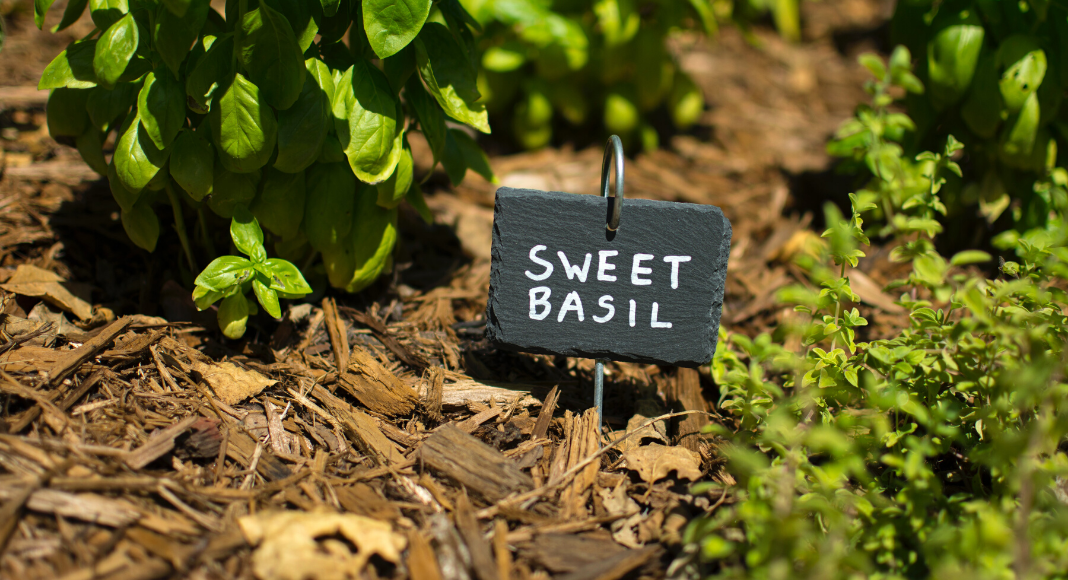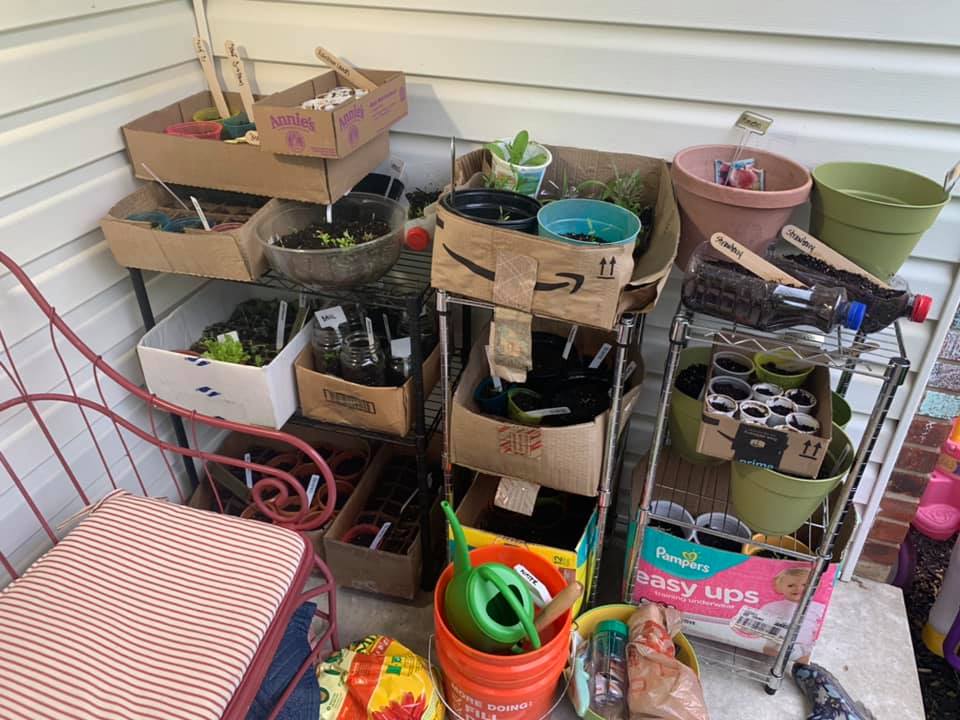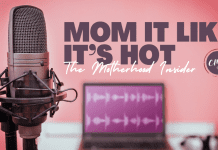This is the year I took over my yard and decided it was the year to start from scratch. My garden has been a project that’s been two houses and four years in the making. My husband and I had just started to clear our yard in the last house when we had to move as we were expecting twins (long story).

Having recently gone through this process, I figured I’d share some of the how and the why behind my garden as it’s not as hard as it looks. And, when you use upcycled materials, gardening can also be fairly inexpensive, especially over time. To be clear, I am no gardening expert, but here are some thoughts and tips I’ve learned:
Determine Your Garden Style
Newbie? Maybe try a container garden, which just means you have a collection of potted food/herbs. Consider what kind of sun you have (most need pretty full sun), and how many pots you can fit there. Things that I’ve found to grow great in pots are tomatoes, baby cucumbers, peppers and herbs.
With a bit more practice, you can drop your plant babies into the ground, but will need to consider the following:
- Do you want raised or unraised beds?
- How much do you want to spend? Raised beds equal more money on good soil to fill them, which also means richer, healthier soil usually. They can be very pretty/fancy, or in my case, upcycled materials. In the ground can be cheaper, but you may need to water a bit more as the moisture can sometimes run more.
Timing is Everything
This is the case for several aspects of gardening.
- Seeds vs. starts – If you want to grow your garden from seeds, you generally want to do this in April/May. Here in Ohio, it’s recommended not to put anything into the ground until after May 15 (think Mother’s Day) to avoid any last-of-the-season frosts. By mid-June, if you are just getting started, it’s better to buy starts from a local store (something that already has roots/green leaves) and put them in the ground.
- Watering – When you first plant something, it needs to be watered significantly to help get the roots established (before the leaves grow, the sun isn’t a part of the mix). Then, it’s best to either water early in the morning, or in the evening. If you water your garden in the middle of the day, your leaves can get burned as the sun evaporates the water. And, the “wetter” the veggie is on the inside (as in, squash/cucumber/tomatoes vs. lettuce/peppers), the more water they usually prefer.
Upcycled and Cheap for the Win
I hate throwing things out and even recycling before I’ve reused something. I also hate to pay more for something if I don’t have to. A few tricks:
- Save containers! I grow my plant babies in old take out containers (yogurt containers work great, too). I even bought the egg coloring cups after Easter and used those (which helped me track which seeds were growing where). As you can see in the photo, our front porch was a little curious to our mailman for a bit until it was time to put them into the ground.
- Have a project around the house? Save your materials. My garden is made from upcycled wood from a neighbor, some other random materials from my dad, and bricks leftover from another project.
- The dollar store NO JOKE often has nice smaller pots (great for keeping herbs separate!) and even small hand tools and seeds perfect for home gardening.
- Ask friends and family! Often, people have old tomato cages they aren’t using or other items that they may no longer need but can work great for you.
There is absolutely nothing from the grocery that compares to homegrown food picked straight from your own garden. I promise. Here’s hoping I’ve motivated you to try your hand at it, even if just one pot this year. It’s not too difficult, and if you have little ones running around, it can be a lot of fun for them to help pick the ripened food!













